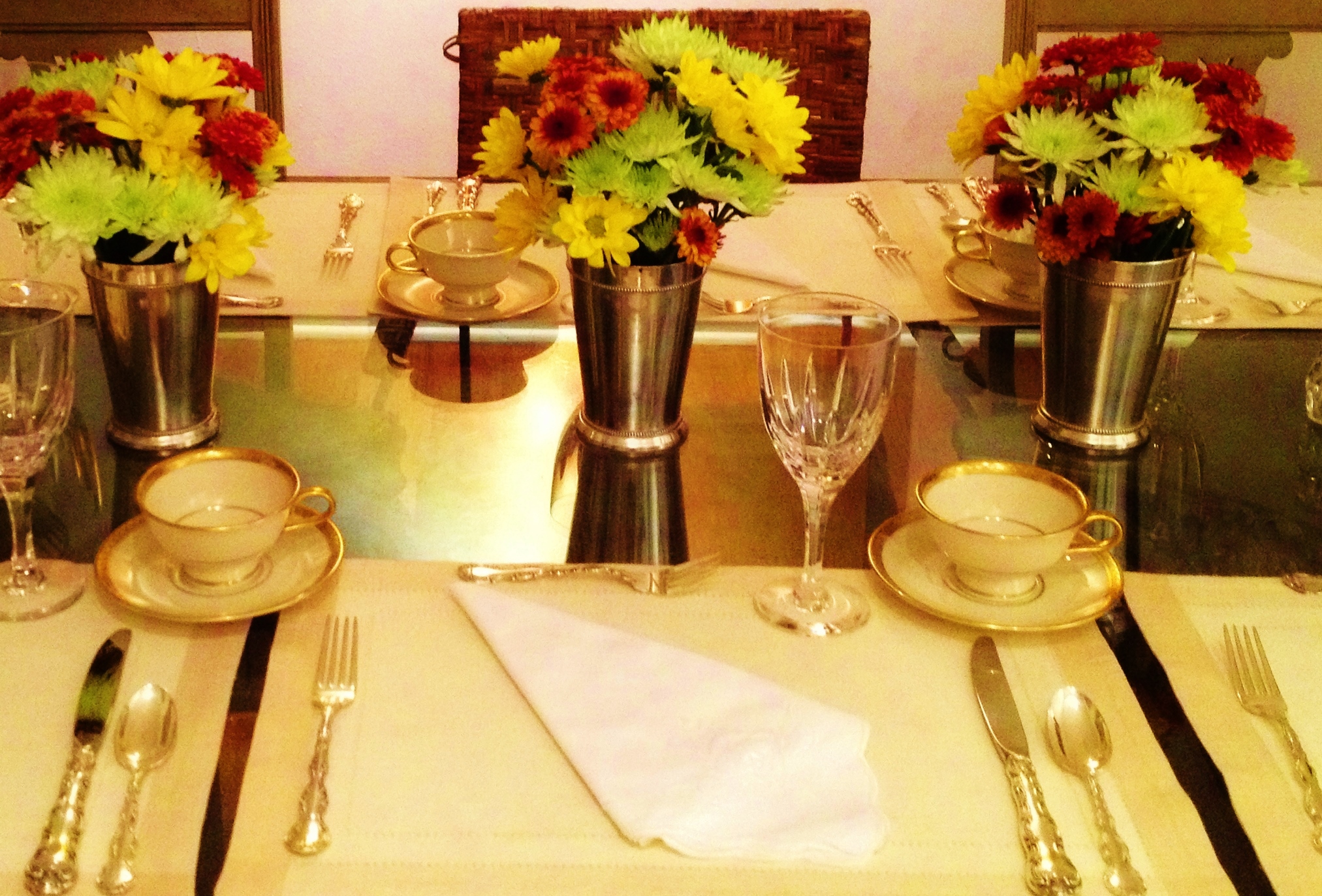 Thanksgiving is my favorite holiday, but it is also one that brings me some consternation. Why? There’s no purchasing of gifts to have to contend with, or the fear that one’s gift won’t be liked or appreciated by the receiver. Of course, not having to spend extra money on presents helps me to like the holiday a whole lot more. However, since 2010, Thanksgiving has taken on a whole new importance for me, but my slight agitation with it actually stems from a better understanding of that first Thanksgiving in 1621.
Thanksgiving is my favorite holiday, but it is also one that brings me some consternation. Why? There’s no purchasing of gifts to have to contend with, or the fear that one’s gift won’t be liked or appreciated by the receiver. Of course, not having to spend extra money on presents helps me to like the holiday a whole lot more. However, since 2010, Thanksgiving has taken on a whole new importance for me, but my slight agitation with it actually stems from a better understanding of that first Thanksgiving in 1621.
In July 2010, the National Endowment for the Humanities program directors selected me for participation in its program about the Pilgrims and Wampanoags, the Native Americans who were involved in the success of the Plymouth Colony. I was really excited to be selected for the program because it meant I’d spend a week in Plymouth and see the locations I had read about from William Bradford’s book Of Plymouth Plantation. I wasn’t as knowledgeable about the Pilgrims as I wished to be, and because Bradford is included in the literature anthology I use for my college students, I wanted to learn more. And boy did I ever learn more!
 The first thing I learned was that much of what we think we know about the Pilgrims and Wampanoags is incorrect. Take for example those buckles on every Pilgrim-related item you see sold in stores. Almost every single one of those decorative Pilgrim figurines is dressed in all black, and they all have buckles on their hats, belts, and shoes. What I learned at Plimoth Plantation, the recreated village of Plymouth town, is that the Pilgrims wore colors, and they didn’t wear buckles. I have taught that lesson to my students, and now, they take great pleasure in snapping pictures of buckle-wearing Pilgrim items sold in stores around the holidays. They love to share those photos with me on my Facebook page. Instead of my blood pressure going up, I just smile and am proud that I have taught my students so well.
The first thing I learned was that much of what we think we know about the Pilgrims and Wampanoags is incorrect. Take for example those buckles on every Pilgrim-related item you see sold in stores. Almost every single one of those decorative Pilgrim figurines is dressed in all black, and they all have buckles on their hats, belts, and shoes. What I learned at Plimoth Plantation, the recreated village of Plymouth town, is that the Pilgrims wore colors, and they didn’t wear buckles. I have taught that lesson to my students, and now, they take great pleasure in snapping pictures of buckle-wearing Pilgrim items sold in stores around the holidays. They love to share those photos with me on my Facebook page. Instead of my blood pressure going up, I just smile and am proud that I have taught my students so well.
Another misconception that we have of the Pilgrims and Wampanoags concerns that first Thanksgiving. While they almost certainly ate turkey, it was not the main dish. Instead, the Pilgrims were having more of a harvest festival in early autumn at which the Wampanoags showed up. In a way, the Wampanoags were party crashers, but unlike people who simply come to mooch off others, Sachem Massasoit had some of the ninety folks who attended with him go off and hunt deer. One detail all the accounts about the first Thanksgiving agree on is that Massasoit and his men provided five deer for the festivities. So, instead of gorging ourselves on turkey and going into a turkey coma each Thanksgiving, we really should be eating deer instead.
I also learned many other great facts about the Pilgrims, but instead of bombarding you with that information, I’m going to share why I love this holiday, too.
Growing up, I spent every Thanksgiving at my maternal grandmother’s house. Nanny, as her ten grandchildren called her, enjoyed having her entire family with her each Thanksgiving day. Because our neighborhood was small, and most everyone in it was some kind of kin, her home became a stopping point for many of the neighbors as well. At times, there’d be upwards of fifty folks in her house.
 Nanny would begin Thanksgiving baking at least three days ahead of time. She’d make red velvet cake, German chocolate cake, coconut cake, carrot cake, and the list goes on. She had so many varieties of desserts that there would hardly be room for them all. After her death, almost all of the grandchildren inherited a cake plate. Each time I pull mine out, I remember the love that Nanny put into baking those cakes for all of us to enjoy. Of course, Nanny wasn’t just good at making dessert. She had several types of meat, veggies, and bread. In addition to her food, each of her four children would bring goodies, too. No one went home hungry at Thanksgiving, and because most of us lived close by, we would eat at her house for the days that followed. It was like Thanksgiving just went on and on; all of us grandchildren enjoyed this extension of the holiday because we loved our grandmother and being with each other.
Nanny would begin Thanksgiving baking at least three days ahead of time. She’d make red velvet cake, German chocolate cake, coconut cake, carrot cake, and the list goes on. She had so many varieties of desserts that there would hardly be room for them all. After her death, almost all of the grandchildren inherited a cake plate. Each time I pull mine out, I remember the love that Nanny put into baking those cakes for all of us to enjoy. Of course, Nanny wasn’t just good at making dessert. She had several types of meat, veggies, and bread. In addition to her food, each of her four children would bring goodies, too. No one went home hungry at Thanksgiving, and because most of us lived close by, we would eat at her house for the days that followed. It was like Thanksgiving just went on and on; all of us grandchildren enjoyed this extension of the holiday because we loved our grandmother and being with each other.
A Thanksgiving tradition we celebrated at my grandmother’s house each year was the drawing of names for Christmas. About twenty names went into the drawing, and the rule was that we couldn’t get a name in our immediate family. Sometimes, the cousins would swap around until we got our favorite’s name, but it was always done in good fun. At Christmas, opening presents was always the grand event; oftentimes, it would take us an hour to get through all the gifts.
My grandmother passed away in 2001. Since her death, all of her grandchildren have grown up and had children of their own. Now, we go to my mother’s home for holidays, and while it is a chance for my son to make memories with his cousins, somehow, for me at least, it just isn’t the same. I miss those large family gatherings with all the cousins. My father has since passed away as has one of my uncles, and Thanksgiving just isn’t the same without them.
Like the Pilgrims, we aren’t just celebrating a bountiful harvest when we gather in our homes each Thanksgiving. We are also celebrating life and being with friends. Half of the Pilgrim colonists died before the first Thanksgiving, and the ones who survived knew how blessed they were to still be alive. So, while we may have many misconceptions about the first Thanksgiving and its participants, at least we got one thing right: Thanksgiving should be a celebration of life and happiness. It should be a holiday for the gathering of loved ones and the enjoyment of their company. This Thanksgiving, be with your family, and if you must, eat some turkey and pull out the buckle-wearing figurines, too!



